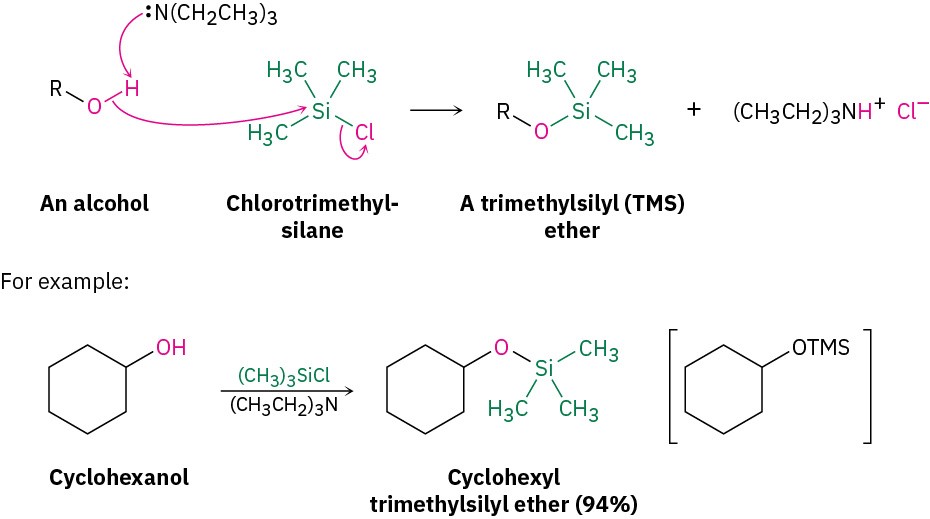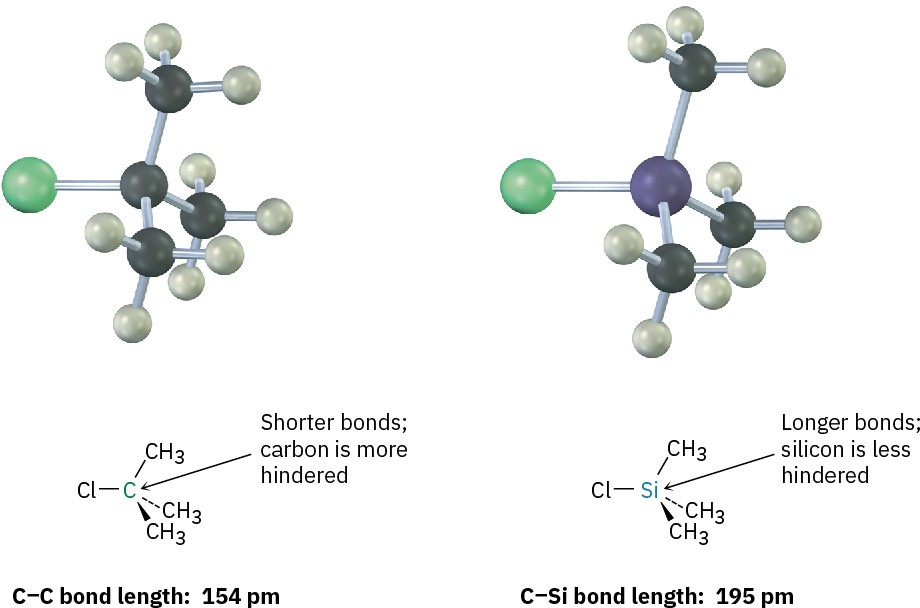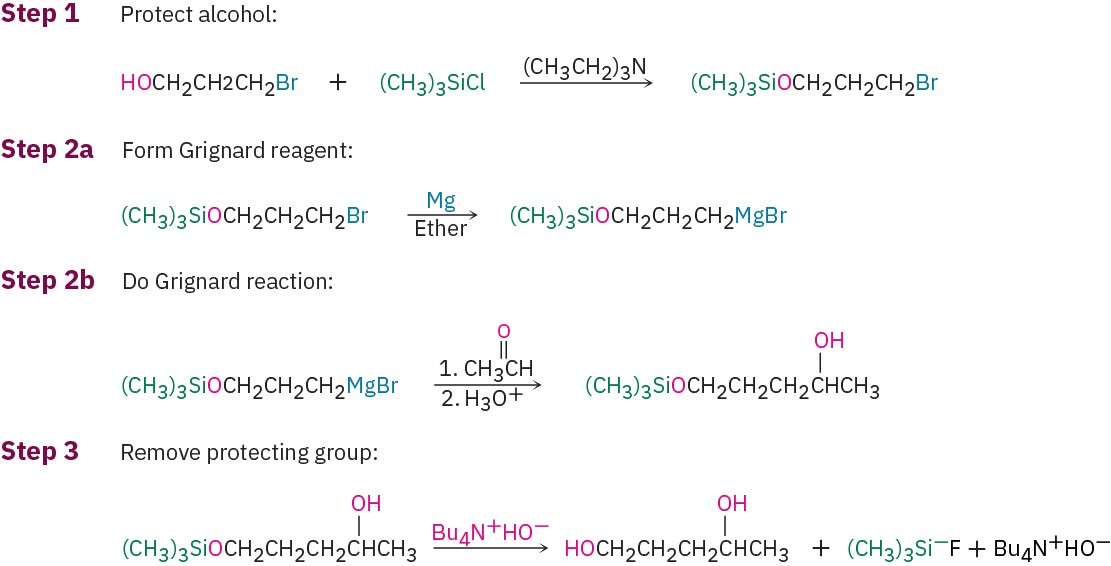17.8 Protection of Alcohols
It often happens, particularly during the synthesis of complex molecules, that one functional group in a molecule interferes with an intended reaction on another functional group elsewhere in the same molecule. We saw earlier in this chapter, for instance, that a Grignard reagent can’t be prepared from an alcohol-containing halidel because the C–Mg bond is not compatible with the presence of an acidic –OH group in the same molecule.

When this kind of incompatibility arises, it’s sometimes possible to circumvent the problem by protecting the interfering functional group. Protection involves three steps: (1) introducing a protecting group to block the interfering function, (2) carrying out the desired reaction, and (3) removing the protecting group.
One of the more common methods of alcohol protection involves reaction with a chlorotrialkylsilane, Cl–SiR3, to yield a trialkylsilyl ether, R′–O–SiR3. (Chloro-tert– butyldimethylsilane), usually abbreviated either TBS or TBDMS is often used, as is chlorotrimethylsilane (TMS), and the reaction is carried out in the presence of a base, such as triethylamine, to help form the alkoxide anion from the alcohol and to remove the HCl by-product from the reaction.

The ether-forming step is an SN2-like reaction of the alkoxide ion on the silicon atom, with concurrent loss of the leaving chloride anion. Unlike most SN2 reactions, though, this reaction takes place at a tertiary center—a trialkyl-substituted silicon atom. The reaction occurs because silicon, a third-row atom, is larger than carbon and forms longer bonds. In addition, three alkyl substituents attached to silicon offer little steric hindrance to ether formation.

Like most other ethers, which we’ll study in the next chapter, trialkylsilylethers are relatively unreactive. They have no acidic hydrogens and don’t react with oxidizing agents, reducing agents, or Grignard reagents. They do, however, react with aqueous acid or with fluoride ion to regenerate the alcohol. Tetrabutylammonium fluoride is often used.

To solve the problem posed at the beginning of this section, note that it’s possible to use an alcohol-containing halide in a Grignard reaction by employing a protection sequence. For example, we can add 3-bromo-1-propanol to acetaldehyde by the route shown in Figure 17.10.

Figure 17.10 Use of a trialkylsilyl-protected alcohol during a Grignard reaction. Problem 17-16
Propose a mechanism for the reaction of cyclohexyl TMS ether with LiF to deprotect the silyl ether.

